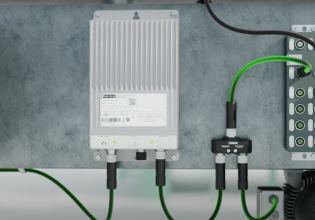3D-Printed Components Now Being Used in Nuclear Power Stations
Westinghouse Electric Company is turning to additive manufacturing to develop new components used in nuclear power generation.
Westinghouse Electric is a pioneer in the railroad and energy industry. A core developer in AC current electricity and power distribution, Westinghouse looks to a new frontier of technology to integrate into the modern nuclear power industry.
Thanks to new technology in 3D printing, Westinghouse Electric announced on recently that they were able to build a stainless steel thimble device used to add fuel assemblies into core reactors in their Byron, Illinois plant.
The trust and consideration of using 3D printing in the industry are beginning to increase, as companies like Westinghouse Electric utilize this method of manufacturing.
Why 3D Printing?
This isn’t your average off-the-shelf SLA style printed gadget, this is a highly detailed and tested device to handle nuclear fuel. With three years of research and development in the device, Westinghouse Electric was able to make 316L Stainless Steel parts using a powder bed fusion process. Powder bed fusion is an additive manufacturing method that uses a laser to solidify an object in a container of powder, layer by layer up to about 1400℃.
This revolutionary method is en route to rendering expensive injection mold or forging methods obsolete. Additive manufacturing has been proven to make complex, small, and detailed parts that other molding methods could not achieve.
Additive manufacturing has been proven to create parts at a faster and more efficient rate than metal forging techniques that require more effort. A more detailed explanation of the process can help readers further understand this concept.
Future of Westinghouse Electric
As new methods in the industry prove suitable for manufacturing, Westinghouse Electric will continue to research and design 3D printed components. “Westinghouse continues to lead the way with the development of the most advanced technologies to help the world meet growing electricity demand with safe, clean, and reliable energy,” said Ken Canavan, Westinghouse’s chief technology officer.

Thimble plugging device 3D printed by Westinghouse. Image used courtesy of Westinghouse Electric.
“Our additive manufacturing program offers customers enhanced component designs that help increase performance and reduce costs, as well as provide access to components that may not be available using traditional manufacturing methods.”
Though a powder bed fusion machine could cost upward to $800,000, it is an investment that can guarantee its profit return due to the low energy use and higher demands for 3D printed components. Unlike an injection molding machine, this process uses a concentrated heat source to create a part by layer rather than all at once.
Powder bed fusion also creates parts with precise repeatability and very tight tolerances that compete with injection molding machines.
Westinghouse Electric Innovations
Through the use of powder ped fusion, Westinghouse Electric is able to recreate obsolete parts that would otherwise be impossible to find, or too expensive to build the original tooling for. Along with powder bed fusion, Westinghouse Electric is now offering new capabilities to satisfy customer demands.
Westinghouse Electric Company, pioneering additive manufacturing in the nuclear industry, is the first company to test materials for this process such as 316L stainless steel, alloy 718 nickel-chromium, and zirconium specimens for printing.
Westinghouse Electric is also a major contributor to the development of “hot-wire laser welding” which is a process that requires less material, less time, and provides a weld that is more accurate and precise than traditional arc welding.
Westinghouse is also offering a service called “cold spray coatings” which is a chemical deposition process that coats parts to effectively prevent degradation and oxidation.






